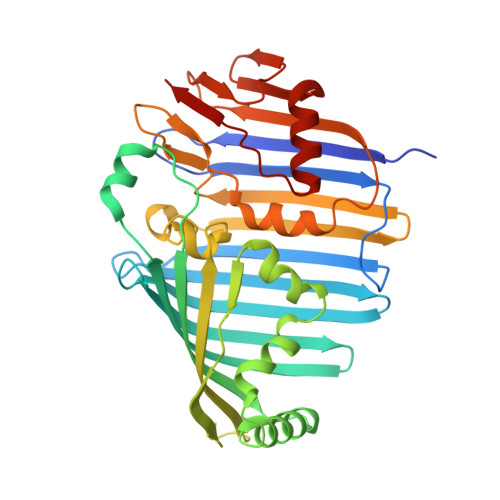Evolution of photosystem I - from symmetry through pseudo-symmetry to asymmetry.
Ben-Shem, A., Frolow, F., Nelson, N.(2004) FEBS Lett 564: 274-280
- PubMed: 15111109
- DOI: https://doi.org/10.1016/S0014-5793(04)00360-6
- Primary Citation of Related Structures:
3BSD - PubMed Abstract:
The evolution of photosystem (PS) I was probably initiated by the formation of a homodimeric reaction center similar to the one currently present in green bacteria. Gene duplication has generated a heterodimeric reaction center that subsequently evolved to the PSI present in cyanobacteria, algae and plant chloroplasts. During the evolution of PSI several attempts to maximize the efficiency of light harvesting took place in the various organisms. In the Chlorobiaceae, chlorosomes and FMO were added to the homodimeric reaction center. In cyanobacteria phycobilisomes and CP43' evolved to cope with the light limitations and stress conditions. The plant PSI utilizes a modular arrangement of membrane light-harvesting proteins (LHCI). We obtained structural information from the two ends of the evolutionary spectrum. Novel features in the structure of Chlorobium tepidum FMO are reported in this communication. Our structure of plant PSI reveals that the addition of subunit G provided the template for LHCI binding, and the addition of subunit H prevented the possibility of trimer formation and provided a binding site for LHCII and the onset of energy spillover from PSII to PSI.
- Department of Biochemistry, The George S. Wise Faculty of Life Sciences, Tel Aviv University, Tel Aviv 69978, Israel.
Organizational Affiliation:


















